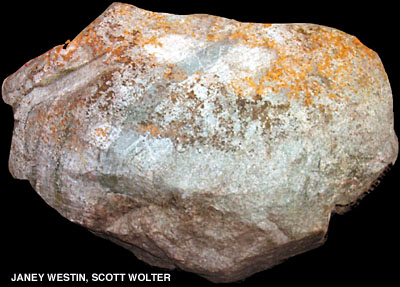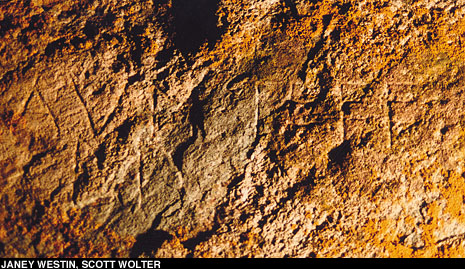Runic inscriptions found on a boulder in Minnesota last May were not carved by Norsemen in 1363 as their discoverers believed, but by graduate students blowing off steam after the 1985 spring semester.
When Minneapolis artist Janey Westin first came across the runes near the town of Kensington, she assumed they were left behind by the same Norse explorers who created the so-called Kensington Runestone, found nearby in 1898. The infamous 200-pound rock is covered with runes that describe the travails of a party of Scandinavians beset by Indians in 1362. Though most scholars doubt the stone's authenticity, it continues to fuel debate about a Norse presence in the Midwest.
Excited by the new find, the Kensington Runestone Museum paid for archaeological testing at the site, which yielded only a few Native American artifacts, and removed the stone to a laboratory for further examination. But hopes for the stone's authenticity were dashed when professors Kari Ellen Gade of Indiana University and Jana Schulman of Southeastern Louisiana University came forward with an affidavit stating that as graduate students they and three classmates in the Germanic philology department at the University of Minnesota carved the runes. "We were fascinated by the Kensington Runestone," says Gade. "It was quite clear to us that it was a hoax and we decided it would be fun to go look at the site and carve a stone ourselves." After sneaking onto property adjacent to Kensington Runestone Park, the graduate students used a hammer and chisel to engrave a pagan magical formula, a Christian invocation, and the date 1363 on a 2,000-pound boulder. "We were curious to see if people would think it was genuine," says Gade.
Scott Wolter, a forensic geologist who has studied the Kensington Runestone, analyzed the students' handiwork before the affidavit was released. Wolter says he was troubled by nagging doubts about the runes before Gade and Schulman came forward, but the revelation of the hoax doesn't make him happy. "I can understand what they did," he says. "I was in college, too--you're nuts half the time--but these were graduate students. They should have known better."
Gade, now chair of the Germanic studies department at Indiana University, is unrepentant. "I'm sorry that people spent their time and money on the stone, but it was clearly a fake".
© 2002 by the Archaeological Institute of America archive.archaeology.org/0201/newsbriefs/runestone.html |

